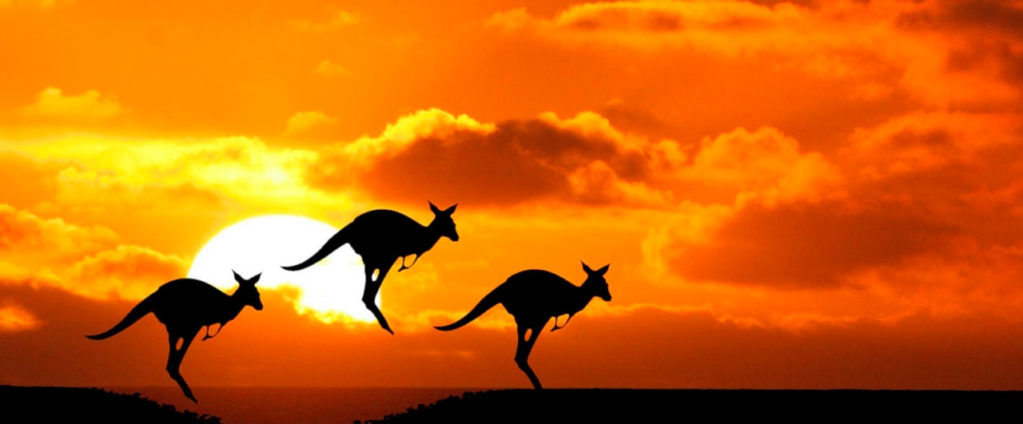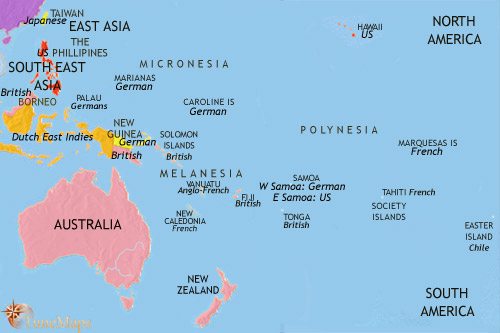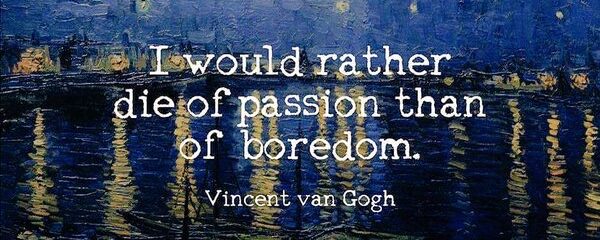
Oceania is a geographic region that includes Australasia, Melanesia, Micronesia and Polynesia. Spanning the Eastern and Western Hemispheres, Oceania has a land area of 8,525,989 square kilometres (3,291,903 sq mi) and a population of over 41 million.
The first settlers of Australia, New Guinea, and the large islands just to the east arrived more than 60,000 years ago. Oceania was first explored by Europeans from the 16th century onward. Portuguese navigators, between 1512 and 1526, reached the Tanimbar Islands, some of the Caroline Islands and west Papua New Guinea. On his first voyage in the 18th century, James Cook, who later arrived at the highly developed Hawaiian Islands, went to Tahiti and followed the east coast of Australia for the first time. The Pacific front saw major action during the Second World War, mainly between Allied powers the United States and Australia, and Axis power Japan.
The arrival of European settlers in subsequent centuries resulted in a significant alteration in the social and political landscape of Oceania. In more contemporary times there has been increasing discussion on national flags and a desire by some Oceanians to display their distinguishable and individualistic identity. The rock art of Aboriginal Australians is the longest continuously practiced artistic tradition in the world. Puncak Jaya in Papua is the highest peak in Oceania at 4,884 metres. Most Oceanian countries have a parliamentary representative democratic multi-party system, with tourism being a large source of income for the Pacific Islands nations.
Australia
Indigenous Australians are the original inhabitants of the Australian continent and nearby islands who migrated from Africa to Asia around 70,000 years ago and arrived in Australia around 50,000 years ago. They are believed to be among the earliest human migrations out of Africa. Although they likely migrated to Australia through Southeast Asia they are not demonstrably related to any known Asian or Polynesian population. There is evidence of genetic and linguistic interchange between Australians in the far north and the Austronesian peoples of modern-day New Guinea and the islands, but this may be the result of recent trade and intermarriage.

Quotes:
Who controls the past controls the future. Who controls the present controls the past. George Orwell
One of the more positive aspects of our existence in Oceania is that truth is flexible and negotiable, despite attempts by some of us to impose political, religious, and other forms of absolutionism. Versions of truth may be accepted for particular purposes and moments, only to be reversed when circumstances demand other versions; and we often accede to things just to stop being bombarded, and then go ahead and do what we want to do anyway.Epeli Hau’ofa
Every time that a man has, with a pure heart, called upon Osiris, Dionysus, Buddha, the Tao, etc., the Son of God has answered him by sending the Holy Spirit. And the Holy Spirit has acted upon his soul, not by inciting him to abandon his religious tradition, but by bestowing upon him light [-] It is, therefore, useless to send out missions to prevail upon the peoples of Asia, Africa or Oceania to enter the Church. — Simone Weil
We should not be defined by the smallness of our islands but in the greatness of our oceans. We are the sea, we are the ocean. Oceania is us.” – Prof. ‘Epeli Hau’ofa

Australian Aboriginal people are most known for their rock art, which they continue to practice after their contact with Western explorers. Other forms of art however, reflect their lifestyle of often moving from one camp to another and is utilitarian and portable, albeit still highly decorated. They used rocks and other natural sources mixed with water to make their paint. Often using sticks to make their famous but recent (from 1971) dot paintings. Even today we still see Aboriginals making these. When dancing, they paint their bodies with white “paint” and apply it to their body in patterns and meaningful shapes and lines. Their dancing uses native Australian animals as inspiration.
The didgeridoo also spelt didjeridu, among other variants) is a wind instrument, played with continuously vibrating lips to produce a continuous drone while using a special breathing technique called circular breathing. The didgeridoo was developed by Aboriginal peoples of northern Australia at least 1,500 years ago, and is now in use around the world, though still most strongly associated with Indigenous Australian music.
A didgeridoo is usually cylindrical or conical, and can measure anywhere from 1 to 3 m (3 to 10 ft) long. Most are around 1.2 m (4 ft) long. Generally, the longer the instrument, the lower its pitch or key. However, flared instruments play a higher pitch than unflared instruments of the same length.











